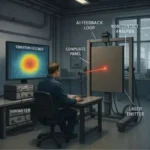What Is OT Asset Management and Why Does It Matter?
Industrial facilities face a growing threat: cybercriminals targeting operational technology (OT) systems. Disrupting production can lead to massive losses, yet traditional tracking methods like spreadsheets, fail to keep pace. To defend against advanced attacks, organizations need full visibility into their OT assets and infrastructure.
Let’s explore why OT asset management is essential, what modern solutions look like, and how they fit into today’s evolving industrial environments.
What Is OT Asset Management?
OT asset management refers to the process of automatically discovering, monitoring, and managing operational technology systems such as PLCs, SCADA systems, and human-machine interfaces. It provides the foundational visibility needed to secure critical infrastructure and ensure uptime.
Unlike traditional inventory systems, modern ot asset management tools continuously scan and update asset records in real time. They detect new or changed devices, monitor system health, and highlight vulnerabilities that could be exploited. These tools are vital for protecting essential operations from downtime, cyberattacks, and compliance failures.
Why Traditional Tracking Falls Short
Many industrial organizations still rely on manual methods like spreadsheets or static databases to manage their asset inventory. These methods are outdated and prone to error. In a typical industrial setting, where thousands of connected devices may exist, manual tracking creates blind spots that attackers can exploit.
Modern solutions use automation, artificial intelligence (AI), and machine learning (ML) to analyze traffic, discover assets, and identify risks far faster than any human can. This shift enables more proactive cybersecurity, faster response times, and better operational continuity.
What’s Driving the Urgency?
A few key trends are pushing organizations to adopt modern OT asset management solutions:
1. Expanding Attack Surface
The line between IT and OT continues to blur as organizations seek greater operational efficiency and connectivity. Unfortunately, this convergence also expands the attack surface. Threat actors, including nation-state groups and ransomware gangs, increasingly target industrial systems. Without visibility into every device and connection, organizations can’t protect what they don’t know exists.
2. Compliance and Industry Mandates
New industry regulations demand better asset visibility. Frameworks like the NIST Cybersecurity Framework, IEC 62443, and NERC CIP require detailed asset inventories, vulnerability assessments, and real-time monitoring. These requirements are nearly impossible to meet using manual processes.
Sectors like energy and manufacturing are under particularly strict guidelines. In the energy sector, smart grids and distributed energy resources introduce added complexity, making asset visibility and security coordination more difficult.
Best Practices in OT Asset Management
Zero trust architecture means no device or user is automatically trusted, even within the network. Each connection must be verified continuously. Micro segmentation, a key part of zero trust, isolates critical OT systems to limit lateral movement in case of a breach.
In 2024, a Cisco report found that organizations where IT and OT teams collaborated saw 40% fewer security incidents. This highlights the importance of joint visibility, shared protocols, and consistent enforcement of access controls.
Linking OT environments to enterprise Security Operations Centers improves incident detection and response. SOC teams benefit from real-time data across both IT and OT systems, allowing them to correlate events and act quickly. Integration also enables automated alerts and response actions without disrupting ongoing operations.
Sector-Specific Considerations
The energy industry faces growing challenges with grid modernization, remote monitoring, and renewable energy assets. OT asset management platforms must integrate with control systems while enabling secure oversight of distributed assets. Real-time coordination is critical to ensuring resilience and uptime.
In manufacturing, Industry 4.0 initiatives have connected production equipment to enterprise networks. OT asset management must align with manufacturing execution systems and automation protocols. Specialized tools are needed to monitor robotics and embedded devices without interfering with performance or product quality.
Common Questions
What’s an example of an OT asset?
Examples include SCADA systems, PLCs, CNC machines, sensors, and robotic arms in factories. These devices are typically found in production lines, power plants, warehouses, and transportation networks.
How does OT asset management help cybersecurity?
It identifies every device, assesses vulnerabilities, and enables rapid action to contain threats, long before they cause real harm.
What are the 5 P’s of asset management?
Planning, People, Process, Portfolio, and Performance. Together, they create a framework for strategic and secure asset operations.
To stay updated with the latest developments in STEM research, visit ENTECH Online. This is our digital magazine for science, technology, engineering, and mathematics. Furthermore, at ENTECH Online, you’ll find a wealth of information.






